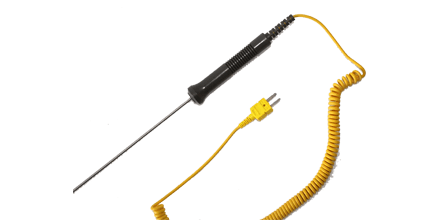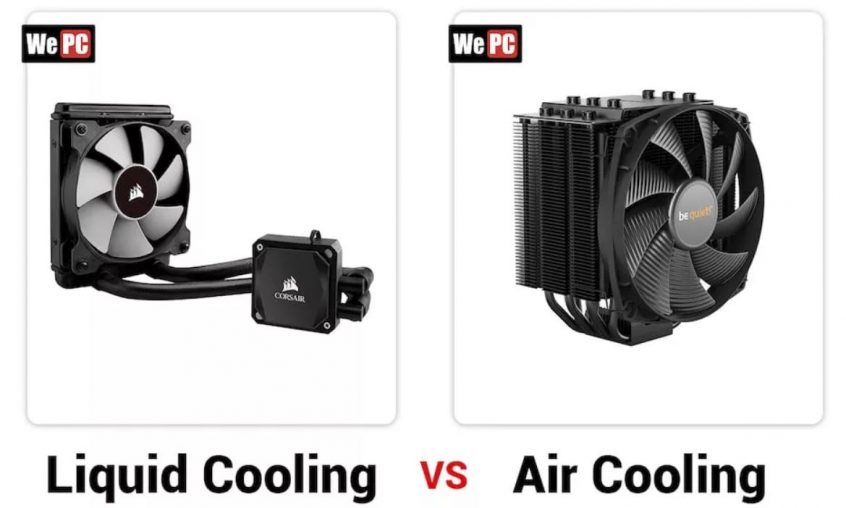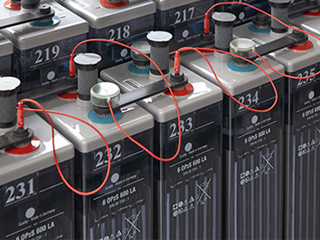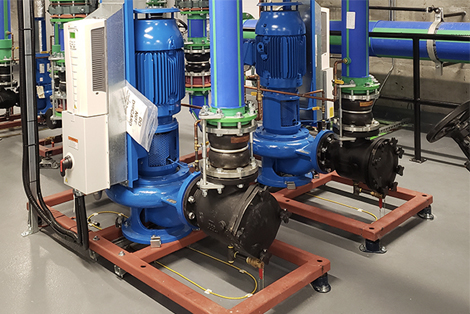As high compute power and high-density server racks become more commonplace, traditional air cooling methods are having trouble keeping up. Enter Liquid Cooling technologies. In this blog, we will compare these two systems side by side to demonstrate how far data center cooling technology has progressed over the years.
Air Cooling Technology
The term “legacy” best describes an outdated technology that is approaching obsolescence. An air-cooled data center draws outside air in through intakes on air handlers. The accumulated air is cooled by a computer room air conditioning (CRAC) unit before dispersing into the “cold aisle” thru raised floors. This cold air will then circulate the servers to cool them before exiting in the back. The back area is called “hot-aisle” where it vented through a plenum back to the air handlers.
Single-Phase Cooling Technology
Single-phase immersion cooling is based on the fact that liquid conducts heat better than air. Servers are submersed in a cooling bath of dielectric fluid. Coolant conducts heat to server components via direct contact. The heated coolant is then cycled between the racks and a cooling distribution unit (CDU) linked to a warm-water loop after exiting the top of the rack. The last stage of heat removal in this loop is a cooling tower on the other side. Then the heat exchanger returns cooled liquid to the rack at the end.
Complexity & Upfront Costs

Photo Credit: gcn.com
Air Cooling Technology
Air cooling technology is the most complex choice compared to immersion and rdhx. But it is the technology that has served the data center industry the longest, around 50 years. Air cooling technology might seem simple. But in reality, implementing such systems requires a long list of equipment, practices, and strategies. Additionally, this equipment needs large power generators, and UPS to be operated. And all this complication equates to large capital expenditure (CAPEX).
Single-Phase Cooling Technology
Unlike air cooling, single-phase cooling technology does not need raised floors and aisle containment. Aside from maximizing the space capacity of a data center, it only has 3 moving parts – a coolant pump, a water pump, and a cooling tower. This can help cut a data center CAPEX by at least 50%. Additionally, there’s no need for CFD analysis of airflow with liquid immersion. Racks can now be placed closely and without the need for raised floors.
Efficiency & Operating Expenses
Air Cooling Technology
The reality is that air is a 1200 times less efficient heat conductor than liquid. This not cools the data center inefficiently but also it only increases the operational cost of the facility. Fans account for 20% of server power usage. Refrigeration components that consume energy are also required to improve the efficacy of air. As a result, the scale of electricity infrastructure is affected. Air cooling technology has the highest operating costs of all major data center technologies while providing a PUE of 1.35 to 1.69.
Single-Phase Cooling Technology
Single-phase immersion cooling reduces energy usage by 90% and up to 50% less total data center energy usage over air cooling. This is due to the only three moving parts reduced infrastructure requirements. As a result, operators can achieve a PUE of 1.03 for immersion cooling.
By the way, air conditioning raises expenses not in electrical power but also in labor. Annual maintenance contracts for the equipment might be quite costly. With single-phase immersion cooling, none of this is essential.
Cooling Capacity & High-Density Performance
Air Cooling Technology
Some air-cooled data centers can indeed cool racks with cooling capacities of up to 30-35kW. However, at 15kW/rack, air-cooled data centers become inefficient. Industry developments are exacerbating the problem. GPU that consumes a lot of electricity are making their way into HPC applications like IoT and AI. Intel’s® new Skylake product, for example, uses a staggering 250 kW of power. Put two of those on a 1U server. Then, add up to 200kW for additional electronics, multiply by 40 servers. Now you have a CPU-based system with a power output of 28 kW. When you add in co-processors and accelerators, air cooling is no longer an option. Datacenter operators may be tempted to build mixed-density racks to meet demand. When it comes to air cooling, hot spots are unavoidable, which might lead to hardware failure. At the next hardware update, operators of air-cooled data centers will face a serious reckoning because of this development in technology.
Single-Phase Cooling Technology
Single-phase immersion cooling systems are designed to break through the heat barrier. And it is hoped that this will usher data center computing into its next phase – and beyond. When combined with a chilled-water system, each method can cool up to 200 kW per rack. These systems also don’t have any issues with hot spots.
Reliability & Location Flexibility
Air Cooling Technology
Any cooling system that sucks air in from the outside is certain to cause hardware failure. Why? Because it exposes IT assets to hazardous airborne pollutants. This refers to corrosion and oxidation. Depending on the air quality and humidity levels of the unconditioned air, this danger rises. Datacenters built in locations with excessive humidity, air pollution, or windblown particles are prone to corrosion. By the way, as the demand for remote edge deployments grows, so do these issues.
Single-Phase Cooling Technology
Single-phase immersion cooling receives the largest possible score in this area due to three key factors: One, it is without a doubt the most basic and practical method of cooling available. Furthermore, there are fewer things that may go wrong: 1.) no chillers, 2.) air handlers, 3.) humidity controllers, and so on; with no server fans to cause vibrations that can reduce MTBF. Second, vital IT assets are sealed off from the outside air with immersion, eliminating any environmental concerns. Finally, the data center is free of hot spots. The temperature difference between any two places in single-phase cooling.
Liquid Cooling Monitoring

AKCP Wireless Pipe Pressure and Power Monitoring Sensors
In today’s data center, monitoring and alarm are required for any system. AKCP Monitoring Solutions offers monitoring and alarms for temperatures, flow, pressures, and leak detection, as well as the ability to report into data center management software suites.

K-Thermocouple Sensors
Temperature Sensors
A wireless temperature sensor or K-type thermocouple is used to record and measure the temperatures of the server surface, liquid bath, and intake and exit coolant inside the coils.
Power Monitoring Sensor
A power meter that can monitor and record real-time power usage must be used to monitor the cooling unit’s power. The AKCP Power Monitor Sensor provides critical data and allows you to remotely monitor power, obviating the need for manual power audits and delivering instant notifications to possible problems. SensorProbe+ and AKCPro Server live PUE calculations may also be utilized with power meter readings to assess the efficiency of power use in your data center. The built-in graphing tool may be used to display data gathered over time using the Power Monitor sensor.
Wireless Pipe Pressure Monitoring
The pressure in the tank was monitored by an automatic pressure relief valve with a pressure sensor. Digital pressure gauge for monitoring all kinds of liquids and gasses. Remote monitoring via the internet, alerts, and alarms when pressures are out of pre-defined parameters. Upgrade existing analog gauges.
Reference Links:
https://www.linkedin.com/pulse/what-immersion-cooling-jason-preston/
https://www.opencompute.org/documents/design-guidelines-for-immersion-cooled-it-equipment-revision-1-01-pdf
https://www.computerweekly.com/feature/The-datacentre-chillfactor-Finding-the-right-conditions
https://www.vertiv.com/en-asia/about/news-and-insights/articles/blog-posts/simpler-and-better-than-you-think-demystifying-immersion-cooled-data-centers/





